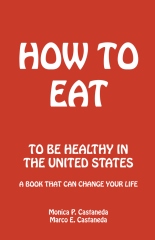A few years ago, during an episode of the Oprah Winfrey show, she had her own personal fitness trainer on stage answering questions from the audience. A woman in her mid twenties asked what she was doing wrong or what she could do different, because in spite of working out vigorously every day and watching her food intake, she could not lose those last five pounds.
Oprah’s fitness trainer cocked his head and looked at her like he was trying to divine something, and then said something like, “Something doesn’t fit in what you are saying… it is just physics.” By this he meant, he explained, that calories burned compared to calories consumed is a simple math calculation: if you burn more than you eat, the result is that you lose body fat. He had a look as if there was something this woman wasn’t sharing, like maybe how once or twice a week she hid in the restroom to eat chocolate.
Many people agree with this “simple math” of calories in versus calories out. “It is just physics.” Only the human body is not a warehouse that simply keeps inventory between merchandise in and merchandise out. Oprah’s trainer would have been much more on spot if he had said, “It is chemistry,” than stating that is was just physics.
The human body is complex, and in need of many different types of nutrients. Our bodies react differently to calories coming from different sources, but also react differently to high calorie foods depending on whether they are eaten on an empty stomach or after a full meal.
For example, 700 calories eaten out of a plate of fish, rice, beans and salad are seen by the body very differently from 700 calories that come from a chocolate bar. Why? Because the 700 calories from the chocolate bar come mainly from sugar, sugar gets assimilated by the organism very quickly, creating an excess in the blood. In order to control the excess sugar, the body produces insulin, and insulin is the substance that sends the message to the body to take the sugars out of the blood and store them as fat. Insulin peaks seem to be at least as important in the process of gaining fat as the amount of calories ingested.
A bar of chocolate eating after you just had a balanced meal will not produce as much of an insulin reaction as it would if you ate it on an empty stomach, because the other foods you ate would act as a buffer.
Sorry, Oprah’s trainer, it is not “just physics.”
A New Slant on Weight Gain
Even more interesting than the insulin response process is a new outlook on weight gain and fat reduction, that is slowly growing among nutritionists and weight loss experts: the idea that when the body puts on fat this is actually a positive response of the organism to protect the organs, systems, and other tissues from excess toxins.
Indeed, modern nutritionists and weight loss experts are finding that when people embark in detoxing processes, even when weight loss is not a goal, it becomes easier for them to lose weight. They also have been baffled by people who are “doing everything right” in terms of activity and counting calories or points, who don’t seem to lose weight.
The theory is that in addition to sustaining basic bodily needs such as hormone balance and brain function, another function of fat is to address excessive toxins. When toxins are ingested in an amount that is too much for the body’s natural detoxing mechanisms to handle, a healthy body reacts by storing those toxins in fat cells.
That nauseous feeling that many people get when they are losing fat, they say, is related to toxins being temporarily released into the bloodstream as your body lets go of the fat.
Just Google “weight loss toxins” and you will get over 8 million hits.
According to these experts, for many people, even if they are exercising and burning more calories than what they are ingesting, their bodies will simply not let go of the fat for as long as they keep eating things like:
- Aspartame, a neurotoxin, the main sweetener in diet sodas (by the way, did you know that two studies have linked drinking diet sodas to increased obesity?)
- MSG, monosodium glutamate, a “flavor enhancer” also a neurotoxin.
- High fructose corn syrup, a laboratory-made sweetener that concentrates the sugars in corn, and which is the main sweetener used for conventional sodas
- Margarine, the “butter substitute” that according to chemists is only a few percentage points away from being a plastic.
Basically, even if you work out and count calories, as long as you keep putting junk in your body, the body will hold on to the fat, and you should thank your body for doing this!


